Energy Observer will be the first hydrogen vessel to sail around the world when she completes her 6-year mission to test a range of eco-friendly, zero-emission, marine power technologies, and at the same time, inspire people in the 101 stopovers in 50 counties along the way.
Energy Observer is the brainchild of her captain, Victorien Erussard, a former merchant marine engineer and ocean yachtsman. She combines three sources of renewable energy sun, wind, hydro-kinetic) with two forms of storage (batteries and hydrogen fuel cells). Victorien is a huge fan of, and advocate for, hydrogen.
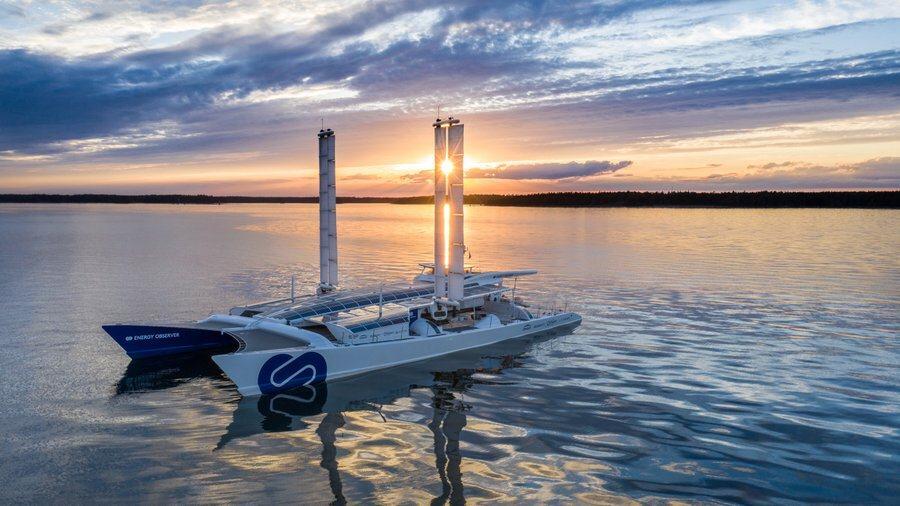
Hydrogen is the most abundant chemical element in the universe. It has exceptional energy density, releasing up to 4 times more energy than coal, 3 times more than diesel and 2.5 times more than natural gas. Its combustion emits neither greenhouse gases nor fine particles… and Energy Observer is the first vessel in the world that can produce her own hydrogen by electrolysis. That’s another reason Victorien loves it: For kilo for kilo he can store 7.3 times more energy in his hydrogen tanks than he can in his lithium ion batteries.
So, the French catamaran doubles up as a test platform for new technologies, and as a media platform using her voyages to push the case for climate protection and promote those technologies to citizens, industry (particularly the marine industry) and politicians.
It’s the marine industry she’s focusing on while moored by Tower Bridge in London this week (5-13 Oct), because London is where the headquarters of the International Maritime Organisation (IMO) is based. This morning some of its senior officials including Mr Kitak Lim, the IMO’s Secretary General, and H.E. Mrs Geneviève van Rossum, the French Ambassador to the IMO, were visiting the boat.
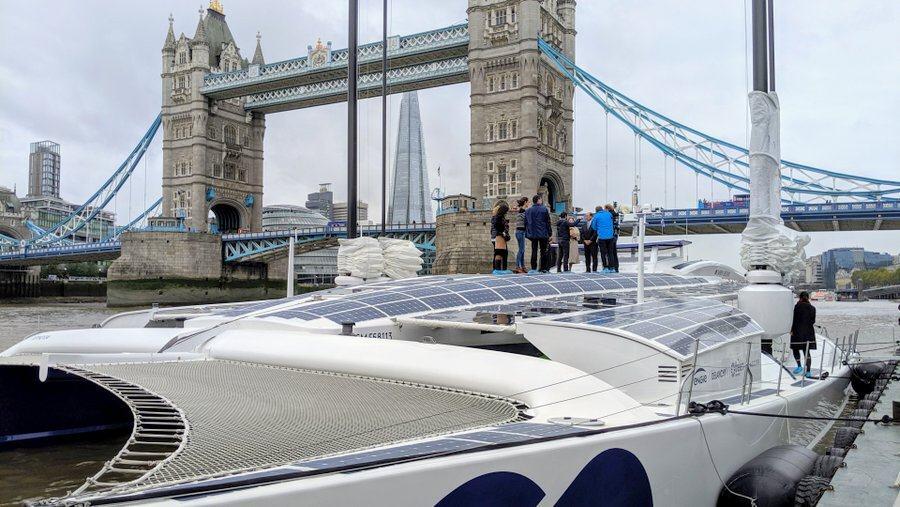
This is the final stopover for this year. Energy Observer set off from St. Malo in June 2017 for her inaugural tour of France.
In 2018 she toured the Mediterranean.
This year she spread her wings, literally (it was the first season she has used wingsails), and covered Northern Europe & Scandinavia – sailing up the Channel and North Sea, into the Baltic ending in St Petersburg. From there she travelled back out of the Baltic and up to the Arctic to visit Spitsbergen (a real test for her systems), before running down the coast of Norway, crossing to the Orkneys and Scotland, before heading for London.

The two 12-metre tall wingsails or Oceansails® have given Energy Observer a new lease of life.
Now, this is not new tech exactly. The oil crisis in 1973, when the price of oil soared, focused minds on ways to save fuel. In the maritime sector for example it resulted in some experimental cargo ships installing huge rotating pillars which exploited the magnus effect, creating extra propulsion. It was an idea that had first appeared in the 1920s.
And in the late eighties, when I was a yachting correspondent, I remember visiting former aero engineer, John Walker, at his base in Devonport Dockyard, Plymouth, to see his Planesail yacht, powered by his Walker Wingsail – a concept he had originated for use on merchant ships.
So wingsails may not be new, but these Oceansails® are certainly a step up on John’s old rigid design… and they bring something new to Energy Observer, the ability to sail.
In her previous iterations (the idea is, each winter they change systems, upgrade, or add new tech) she was driven only by her propellers. She had two vertical axis wind-turbines which provided extra power to her batteries, but she was only able to make hydrogen when she was stationary at moorings on on port visits.
This year the wingsails give her a secondary propulsion system, and here’s the clever thing: with a strong wind (they experienced winds up to 50 knots in the Arctic) they can invert the electric motors on the propellers which become turbines, and generate the energy needed to make hydrogen on the move. Very handy in the Arctic where the sunlight conditions for the solar panels were not as favourable as in lower latitudes.
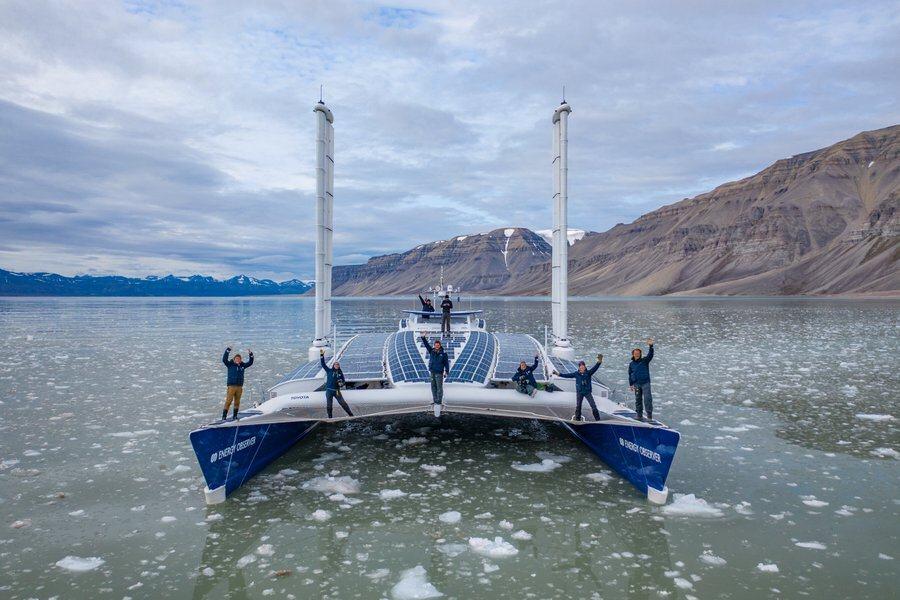
So, what’s ahead?
Well, this winter will see an upgrade for those solar panels, and then in 2020 they head for North-East Asia. In 2021 they’ll be touring the Pacific and the American West Coast, and then in 2022 they’ll visit Central America and the American East Coasts.
And beyond that?
The purpose behind Energy Observer is to develop, test and promote new zero-emission marine systems that can be scaled and applied to shipping. When I asked Mr Lim from the IMO what year I can expect to see an all-hydrogen powered cargo ship, he’s reluctant to say, but he is confident that, encouraged & guided by the IMO, shipbuilders and owners will make great strides in research and design of low to zero emission systems in the next decade or so, and they’ll probably appear first in small ships on short routes.
You can visit Energy Observer at St Katherine’s Wharf by Tower bridge and see her exhibition nearby at Marble Quay (250m away) between now and 13th Oct.

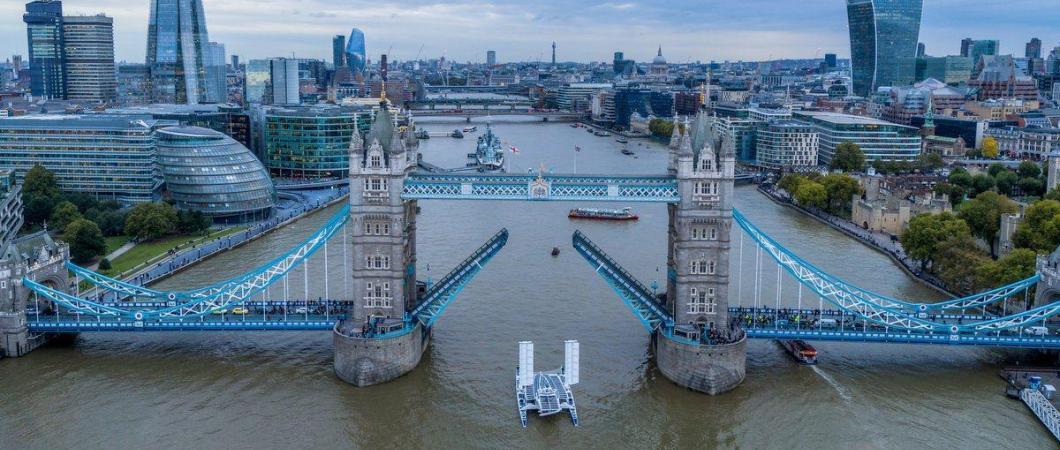
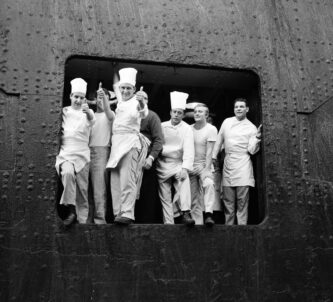
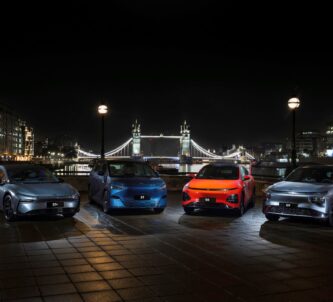
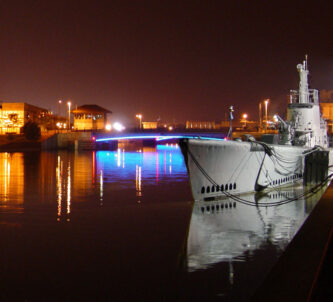
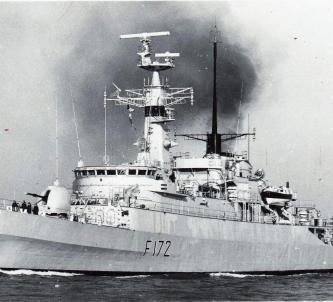
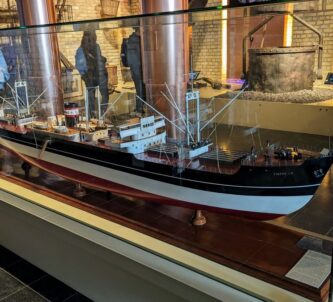

So current cruise speed in knots?
15 kts max, though I suspect they can get a little higher under wingsail in strong winds.